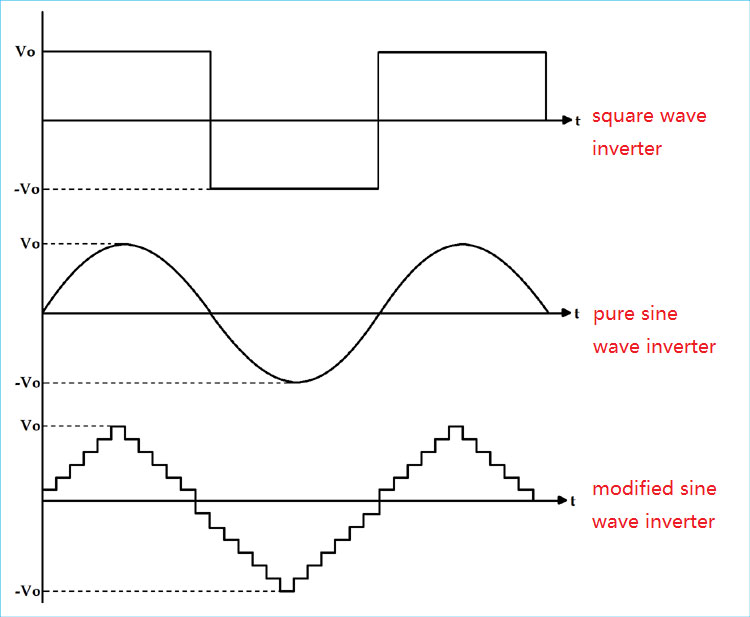What are the most common inverter types?

An inverter is a complex electronic device that converts direct current (DC) power to alternating current (AC) power, a requirement for many home appliances and other devices.
Inverters are mainly divided into three types: pure sine wave inverters, modified sine wave inverters and square wave inverters.
Each type of inverter has unique advantages and disadvantages and is suitable for different applications.
Differences between square wave and pure sine wave inverters
1.Pure Sine Wave Inverters
The pure sine wave inverter produces a seamless, unbroken AC waveform that matches the waveform of the utility power. It's the most suitable choice for sensitive electronic devices that require clean power, such as laptops, televisions, and medical equipment. The output of pure sine wave inverters is of exceptional quality, although they come at a high price, but they are the least likely to damage or harm sensitive equipment.
2.Modified Sine Wave Inverters
The modified sine wave inverter, generates a stepped waveform that is somewhat less regular than that of pure sine wave inverters. It's less expensive than the other types of inverters, and it's appropriate for most household appliances, such as blenders, coffee makers, and power tools. Modified sine wave inverters are also used in ambulance power inverters to power medical equipment. They offer a stable power supply, but they don't have the same high cost as pure sine wave inverters.
3.Square Wave Inverters
The square wave inverter produces a square waveform that is not suitable for most household appliances or sensitive electronic devices. They are the least expensive type of inverter, but they are also the least versatile. Square wave inverters are only suitable for powering basic appliances such as lights and fans, and are not commonly used in most applications.
Conclusion
To sum it up, the three primary types of inverters are pure sine wave inverters, modified sine wave inverters, and square wave inverters. Each inverter has its own unique advantages and disadvantages, making it the best fit for a specific application. An ambulance power inverter is an example of a modified sine wave inverter, which is suitable for powering medical equipment in ambulances. It's critical to consider the specific requirements of the devices that will be powered when selecting an inverter, as well as the cost and quality of the inverter's output.




